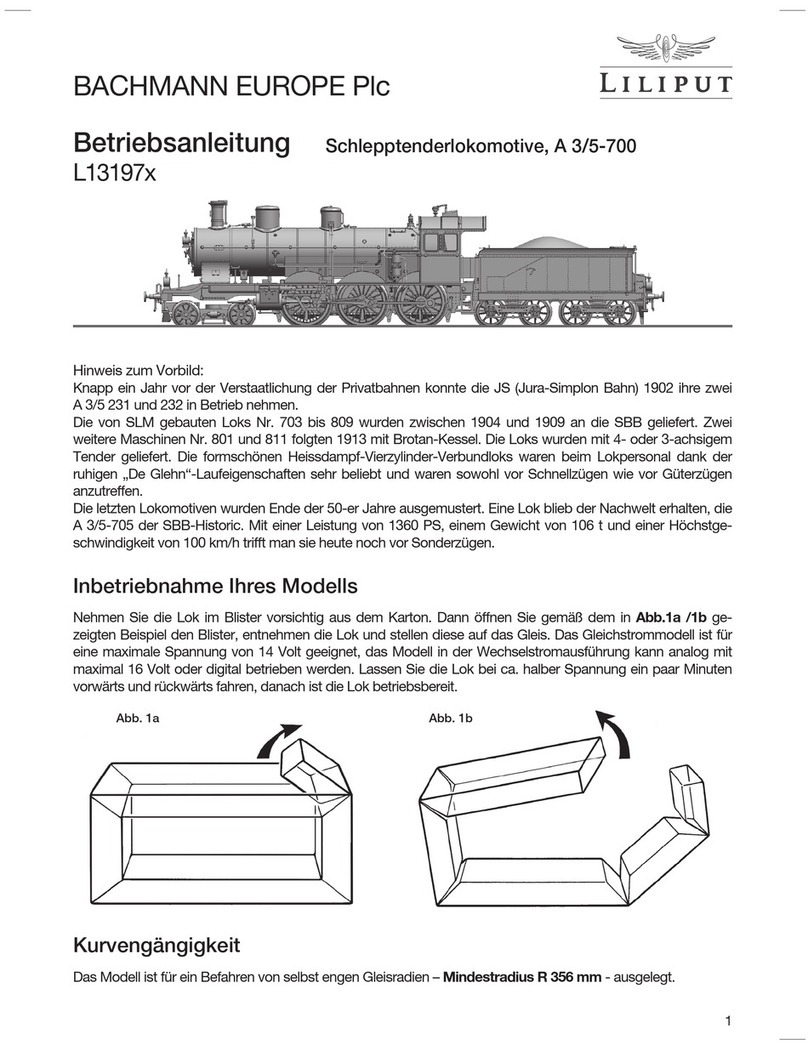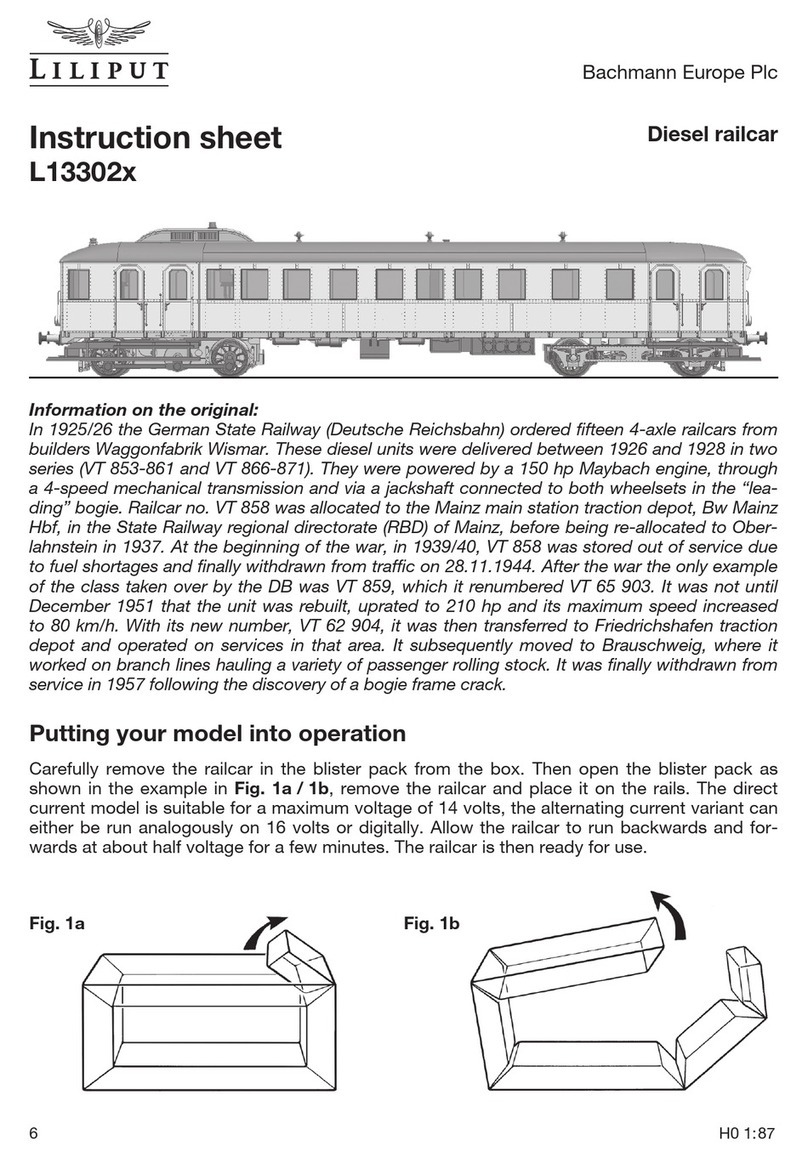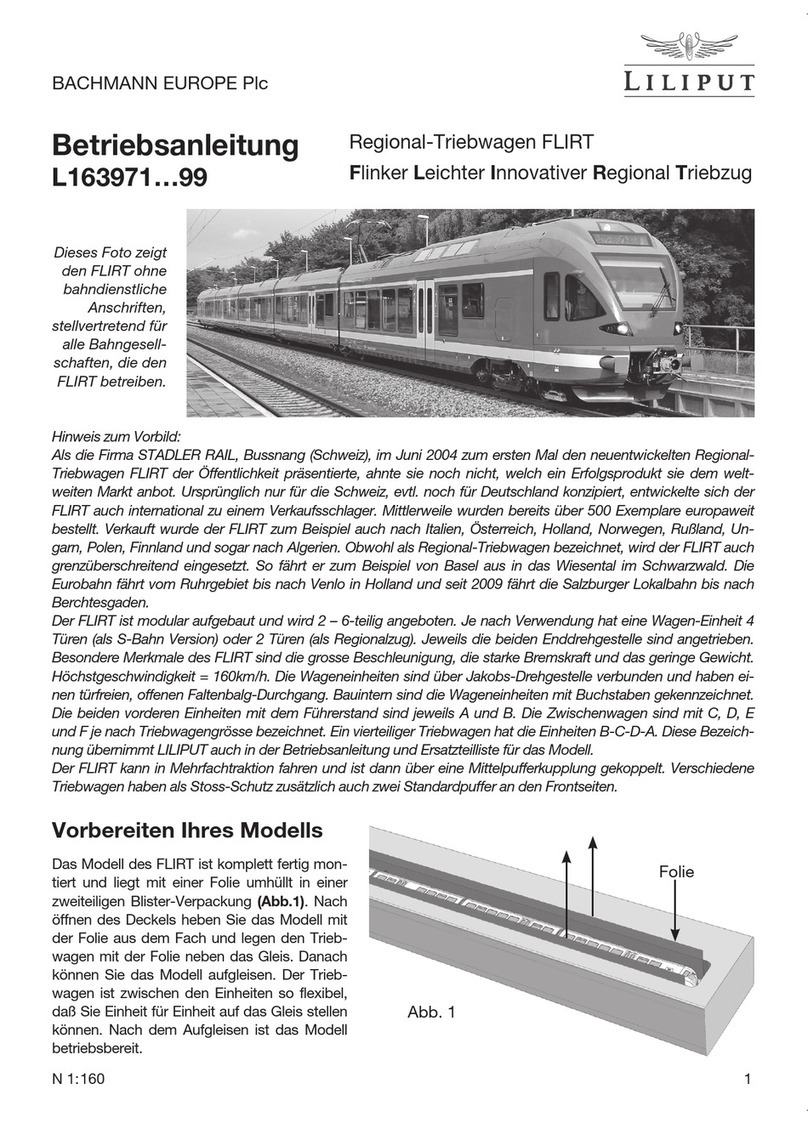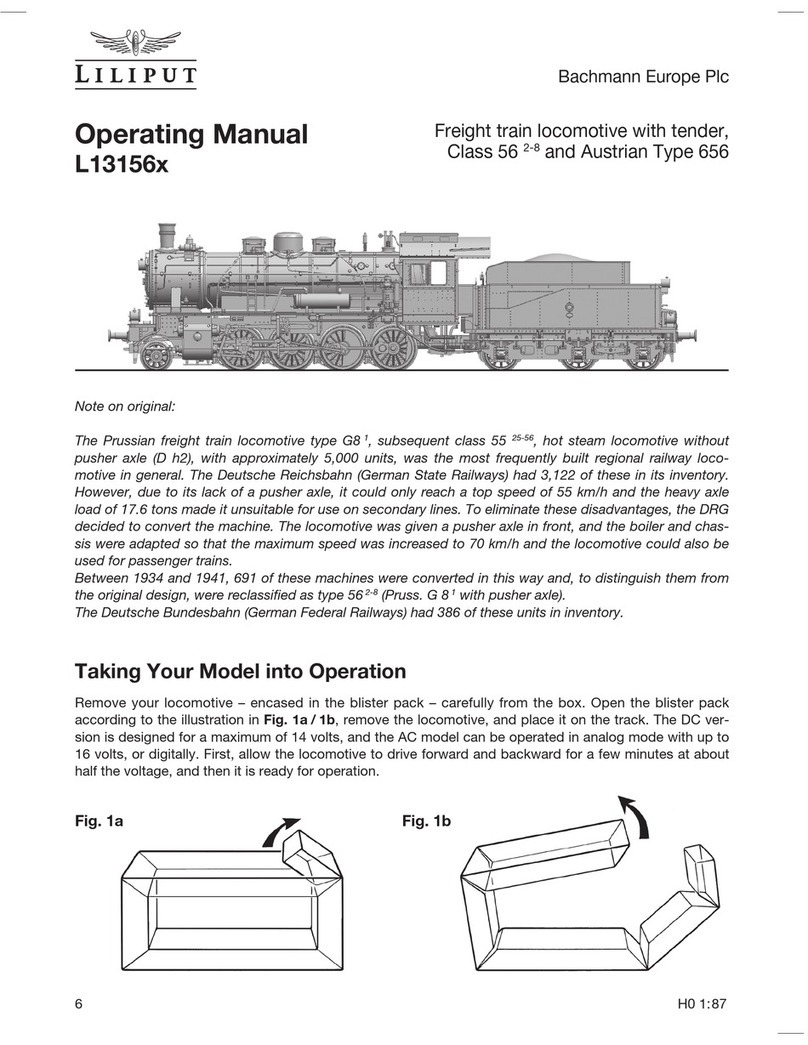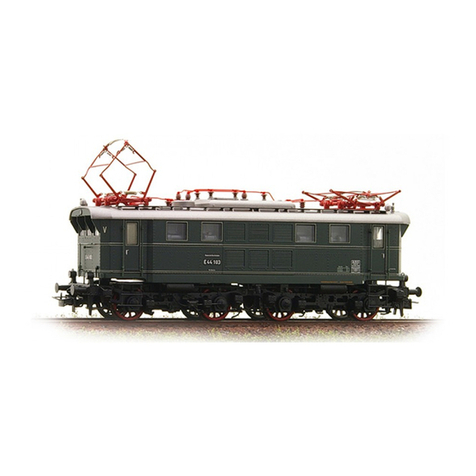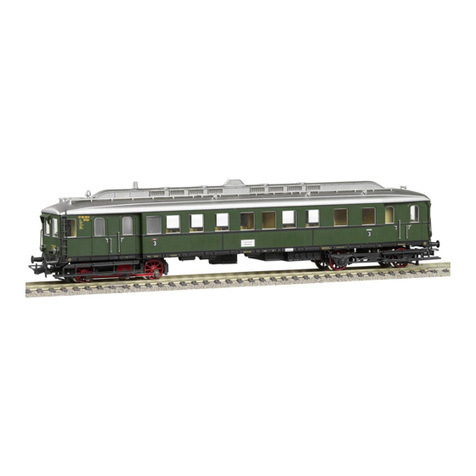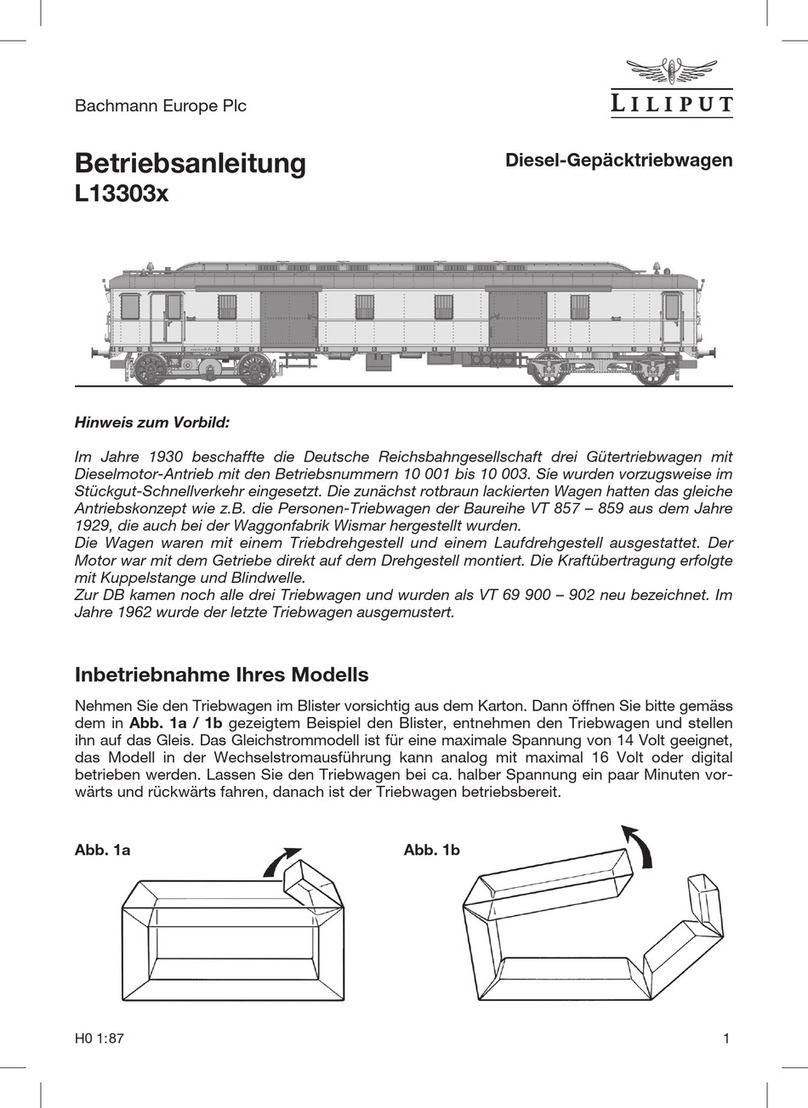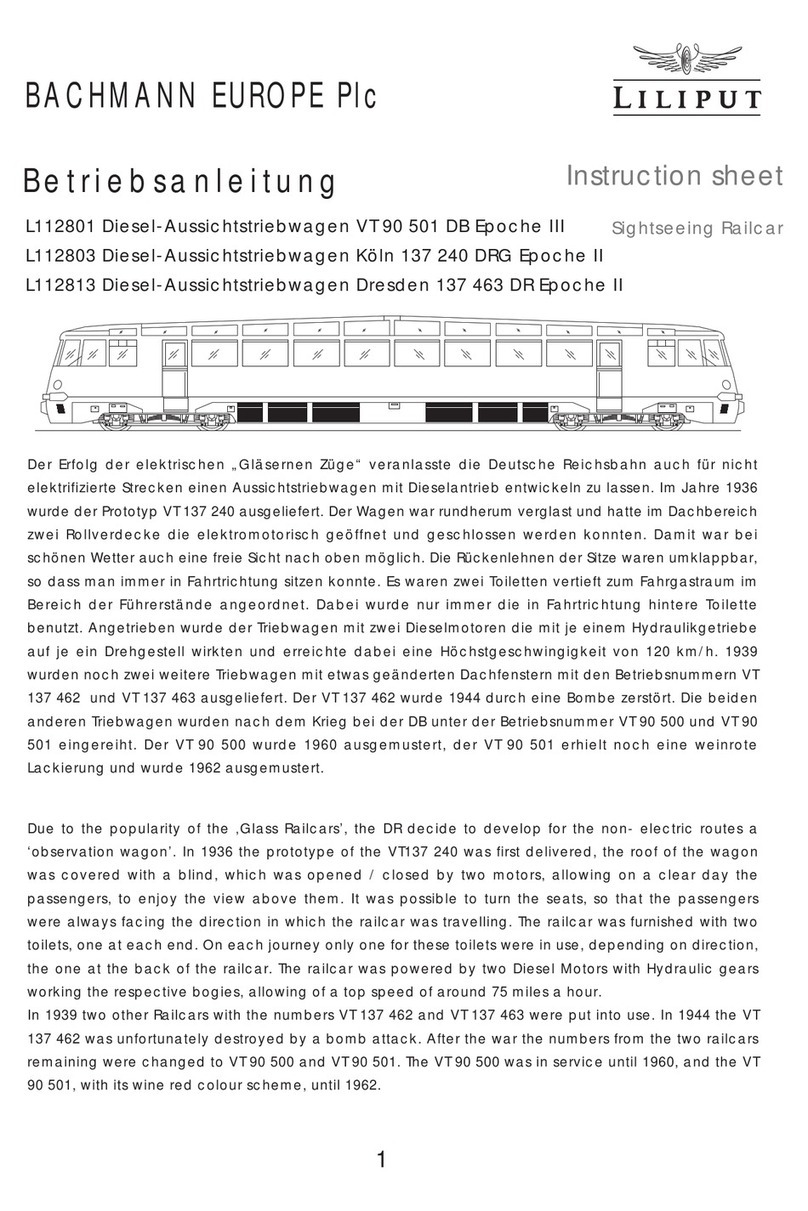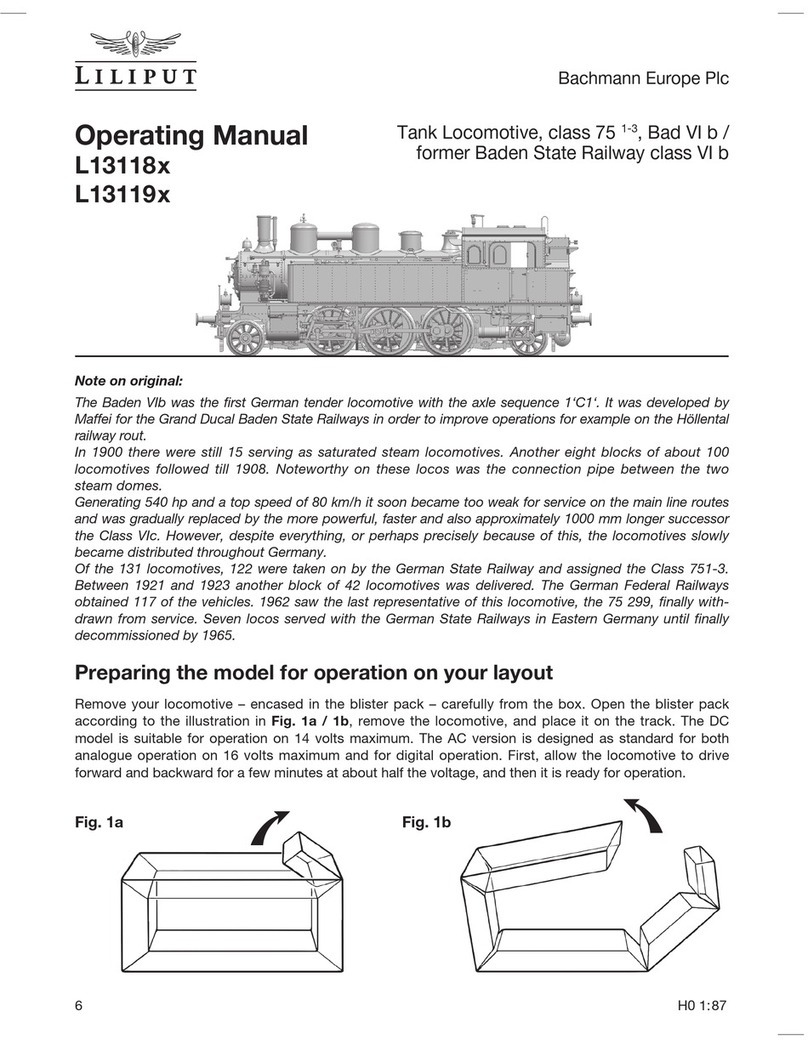
12 H0 1:87
Garantiebedingungen:
Dieses LILIPUT-Modell hat ab Kaufdatum zwei Jahre
Garantie auf Reparaturen und Teile, sofern es bei einem
autorisierten Händler gekauft wurde und dieses Zertifikat
vom Händler abgestempelt und das Kaufdatum einge-
tragen worden ist. Die Garantie umfasst nach Wahl von
Bachmann Europe Plc entweder die Beseitigung eines
eventuellen Mangels oder den Ersatz schadhafter Teile.
Weitergehende Ansprüche sind ausgeschlossen.
Beachten Sie bitte, dass für nachträglich eingebaute Teile
(z.B. Decoder oder Lautsprecher) sowie für dadurch ent-
standene Schäden keine Haftung übernommen wird.
Kaufdatum mit Händlerstempel:
DEUTSCHLAND:
BACHMANN EUROPE PLC
NIEDERLASSUNG DEUTSCHLAND
AM UMSPANNWERK 5
D - 90518 ALTDORF BEI NÜRNBERG
ÖSTERREICH:
DOLISCHO MODELLSPIELWAREN
BAHNSTRASSE 4
A - 2340 MÖDLING
SCHWEIZ:
MODELLBAU UND
ELEKTRONIK
STETTBACHSTRASSE 193
CH - 8051 ZÜRICH
ALLE ANDEREN LÄNDER:
BACHMANN EUROPE PLC
MOAT WAY, BARWELL
GB - LEICESTERSHIRE LE9 8EY
Garantie-Schein
Sollte Ihr LILIPUT-Modell einen Mangel oder eine Störung aufweisen oder einmal reparatur-
bedürftig sein, haben Sie die Möglichkeit, sich diesbezüglich entweder an den Händler, bei dem
Sie das Produkt gekauft haben oder direkt an die Kundendienstabteilung einer der nachfolgend
angegebenen Adressen zu wenden.
Bachmann Europe Plc · Moat Way · Barwell · Leicestershire · LE9 8EY · England Made in China
Wichtig! Wir empfehlen die Originalverpackung aufzubewahren,
sie ist der beste Schutz für Ihr Modell, wenn dieses nicht gerade
auf Ihrer Anlage unterwegs ist. Beim Betrieb der Lok auf Teppich-
böden kann die feine Mechanik durch Fasern zerstört werden.
Änderungen in Konstruktion und Ausführung vorbehalten. Bitte
bewahren Sie diese Beschreibung zum späteren Gebrauch auf.
Dieses Produkt wurde nach Vorschriften der europäischen Spiel-
zeugrichtlinien (CE) hergestellt. • Important! We recommend that
you keep the original box. It is the best place to store your model,
when it is not in use. Please be aware, that carpet fibres can de-
stroy the fine mechanism of the locomotive. Subject to changes in
design, version and technical data. Please retain these data and
instructions for further reference. This product has been manufac-
tured according to the European toy Safety Directive
(CE). • Importante! Raccomandiamo di tenere la
scatola originale. E’ il posto migliore in cui tenere il
tuo modello quando non è in uso. Fibre di tappeti
possono distruggere il fine meccanismo della loco-
motiva. Preghiamo di conservare questi dati ed istruzioni per altre
informazioni. Quest’articolo è stato prodotto in accordo con la
Direttiva Europea Sicurezza giochi (CE).
Achtung! Bei unsachmäßigem Gebrauch besteht Verletzungsgefahr
durch funktionsbedingte scharfe Kanten und Spitzen • Attention!
At an incorrect use there exists danger of hurting because of cutting
edges and tips • Attention! Il y a danger de blessure à un emploi in-
correct à cause des aiguilles et arêtes vives! • Voorzichtig! Bij ondo-
elmatig gebruik bestaat verwondigsgevaar door scherpe zijkanten
en uitsteeksels! • Attenzione! Un uso improprio comporta pericolo
di ferimenti attraverso punte e spigoli taglienti! • Atencion! Un em-
pleo incorrecto puede causar heridas debido a las puntas y aristas
agudas! • Atençao! Por utilizaçao incorrecta existe o perigo de es-
tragos, em virtude de cortes nas abas e nas pontas!
• Προξοχη! Η ακαταλληλη χρηοη εγκλειει κινδυνουζ
μκροτ ραυματιομων, εξ αιπαξ κοπτερων ακμων και
προεξοχωθν • Bemaerk! Ved ukorrekt brug kan de funk-
tionsbetingede skarpe kanter og spidser forfolde skade!
